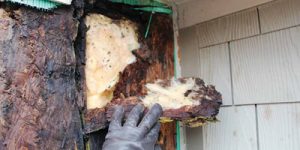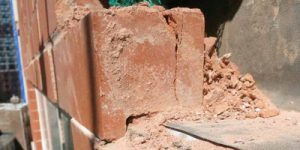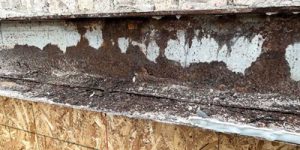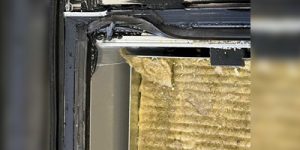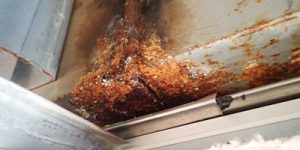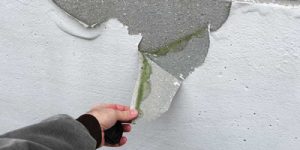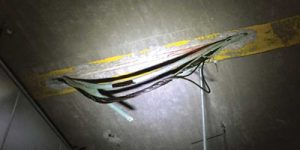When specifying prefabricated building enclosure systems, project-specific quality assurance (QA) procedures, including a step-by-step review and documentation of the panel assembly during off-site fabrication, are often required.
+ Read More
|
Many industry groups recommend kick-out flashings, and various prefabricated options for three-sided flashings are available; however, they are not consistently used where needed. Two recent projects show the severe consequences when this critical component is omitted, leading to significant structural deterioration only a few years after construction.
+ Read More
|
If not properly detailed and/or constructed, lipped brick installations can lead to distress, often within a few years of construction.
+ Read More
|
Since no drawings survived showing the original 1950s design, further investigation began with inspection openings at locations of displaced brick masonry to document the actual dimensions and configuration of the structural steel assembly.
+ Read More
|
Whether field or shop fabricated, one quality control measure to confirm the integrity and consistency of the structural sealant application is to deglaze representative assemblies—deglazing representative assemblies also assists in developing protocols for infill replacement should the infill be damaged in-service.
+ Read More
|
Prior to the adoption of the 2015 International Building Code (IBC), vents were required in the roof assembly to allow the “attic” space—between the underside of the roof deck and the top of the ceiling below—to vent to the exterior. However, the volume of air movement provided by these...
+ Read More
|
When through-wall flashing is not properly detailed or installed in cavity wall construction, the water penetration resistance of the enclosure can be compromised. This was recently observed at a multi-story office building in the southeastern U.S., that regularly experienced water leakage during prolonged rain events above ribbon window assemblies.
+ Read More
|
Regardless of the exact cause, this failure points to the importance of understanding the substrate condition prior to coating application.
+ Read More
|
A close-range examination revealed the gaskets were not driven to the required depth within the joints to engage the locking barb with the corresponding raceway in the outboard aluminum trim. Instead, they were retained in the joint through compression alone, leaving them susceptible to disengagement over time.
+ Read More
|
PT tendons are susceptible to corrosion from water and chloride (salt) ingress in similar ways as conventional reinforcing steel. However, unlike conventionally reinforced concrete, the effects of corrosion can result in the tendons losing tension and the concrete losing pre-compression.
+ Read More
|
|
|




